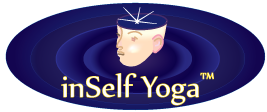-
Quote from: archi
I use kapalabhati, bhastrika and another pranayam after asana practice where jump-starts prana but then it is too much to relax into pratyahar so I do other techniques.
kapalabhati makes sense in a way that asanas you perform it because they are more or less static (i.e. hatha) and one does not have to compromise on pramayam. Once one starts moving prana there is going to be much more stress on the body. This is one of the reasons I stick to ujjayi because asanas are more physical, there are more transitions etc. Actually, it answers my question :).
Mi~Beloved’s Response:
It may be that my practice is a bit different, in that there is focus on doing pranayama to affect the subtle body, even though the physical system is affected simultaneously. But during my practice, the focus about 85% or more of it is in the subtle body.
Even though as you stated there might be too much energy from pranayama so that it is too much to relax to do pratyahar, I feel this happens if one does not segregate the subtle body from the physical one and one is unable to get the subtle body specifically surcharged with fresh prana which shifts that form to a higher plane where pratyahar happens as the normal condition there.
There is much variation in the methods especially regarding the focus of the yogi while practicing. It is great that you explained what you do and described the advantages of that practice for you.
I use asana postures only to make specific routes open to the spread/distribution of fresh prana and removal of polluted energy in the subtle body, because in my case, some areas are so hard to reach that sitting in lotus or some other posture and doing the breath infusion is insufficient to make the energy reach certain areas like down in the toes for instance or in the elbows. But various postures allows for the access to the hard-to-reach areas which may remain polluted if the stale energy lingering there is not extracted.
Comment to kapalabhati

